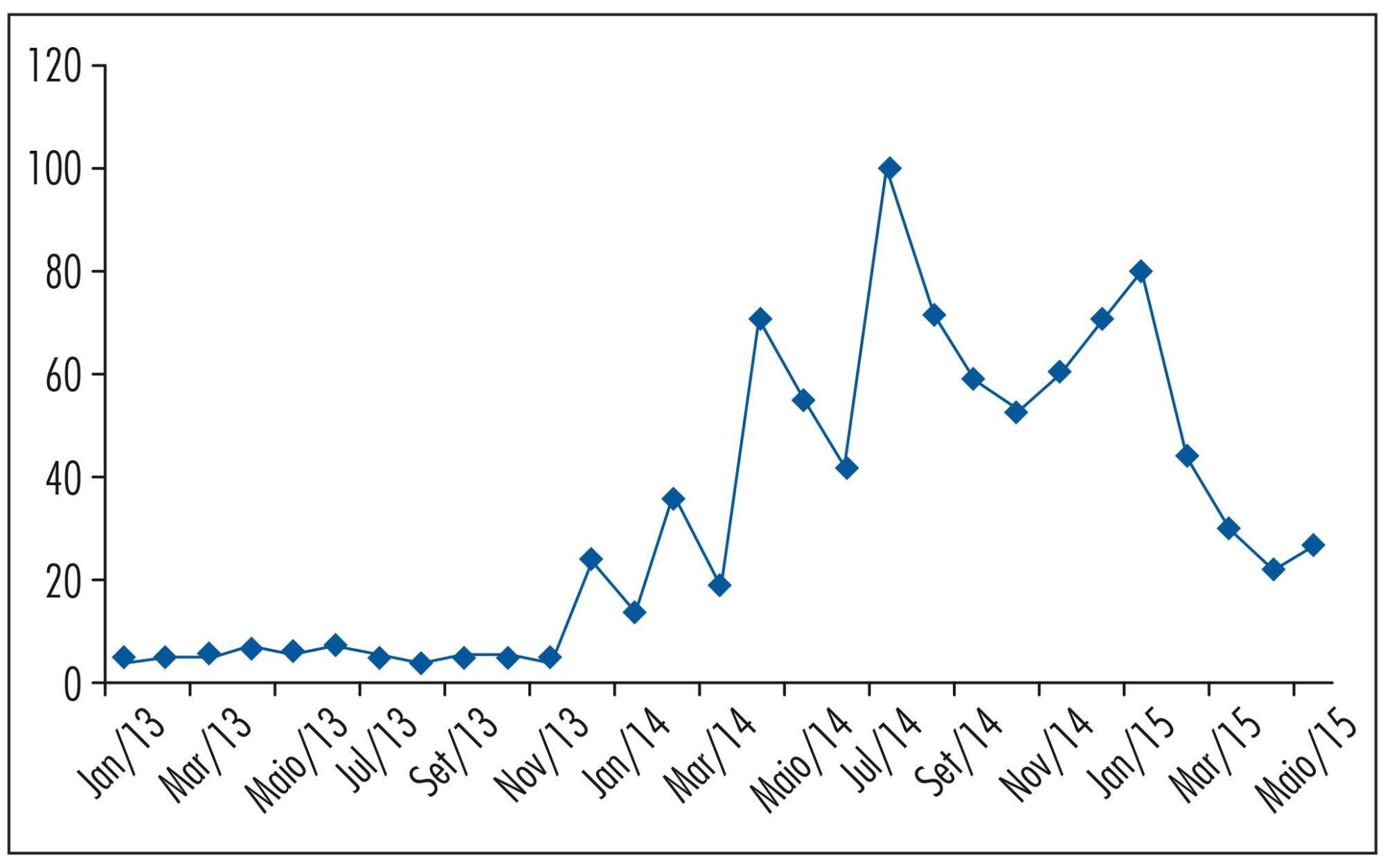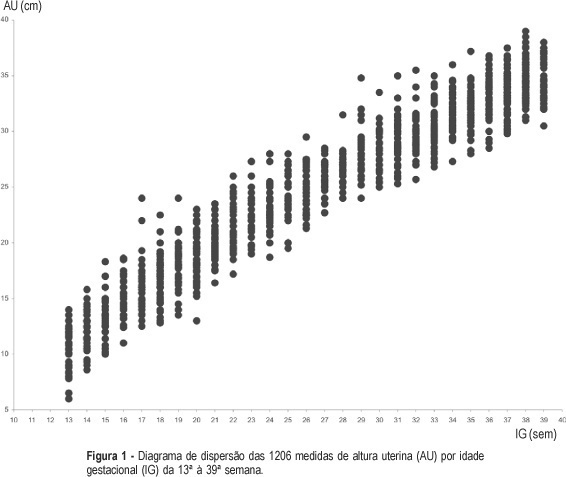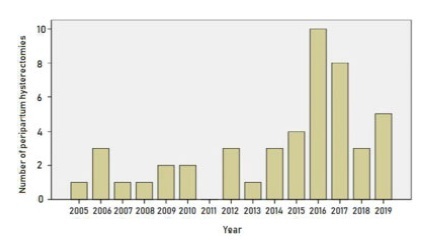Summary
Revista Brasileira de Ginecologia e Obstetrícia. 2005;27(6):299-300
Summary
Revista Brasileira de Ginecologia e Obstetrícia. 2015;37(7):299-301

Summary
Revista Brasileira de Ginecologia e Obstetrícia. 2001;23(5):299-303
DOI 10.1590/S0100-72032001000500005
Purpose: to evaluate the intrauterine treatment of anemic fetuses that underwent intrauterine transfusions due to rhesus isoimmunization. Methods: the authors studied sixty-one fetuses undergoing intrauterine transfusions by the intravascular, intraperitoneal or both routes. The hydropic fetuses (19.7%) received only intravascular intrauterine transfusions. There was an overall number of 163 intrauterine transfusions with a mean of 2.7 procedures for each case. The indications for intrauterine transfusions were high values of bilirubin in amniotic fluid analyses by the Liley method or a hemoglobin concentration of cord blood below 10.0 g/mL. Results: the overall perinatal survival rate was 46% for hydropic fetuses and 84% for the nonhydropic ones. There were no maternal side effects related to the procedures. Half of the intrauterine transfusions were performed by the intravascular route. The mean gestational age at the delivery was 34.8 weeks. Conclusions: despite better perinatal results with intrauterine transfusions guided by ultrasound, especially using intravascular procedures, rhesus isoimmunization remains as an important cause of high rates of perinatal morbidity and mortality.
Summary
Summary
Revista Brasileira de Ginecologia e Obstetrícia. 2007;29(1):3-9
DOI 10.1590/S0100-72032007000100002
PURPOSE: to analyze patients with vulvovaginal candidiasis with respect to risk factors, symptomatology and results of anal culture, to identify the frequency of species of Candida albicans and non-C. albicans, and to correlate anal and vaginal colonization. METHODS: a total of 99 patients were included with suspected vulvovaginal candidiasis, from Natal, Brazil, between May 2003 and May 2005, totalling 294 collections. The clinical material, obtained by vaginal and anal swabs, was seeded on CHROMagar Candida®. The yeasts were identified using the classic method, in addition to the growth test at 42º and 45ºC and the Hypertonic Saboraud broth test. Symptomatology, risk factors and anal colonization were assessed according to positive or negative culture for Candida spp. The cultures positive for C. albicans at the two sites were compared with other results encountered. Yates’ chi2 test and Fisher’s exact test were used for statistical analysis. RESULTS: the most frequent was C. albicans in 69% of the cases. Wearing tight and/or synthetic underclothing, the presence of allergic diseases, the occurrence of itching, leukorrhea and hyperemia showed a significant association with positive culture for Candida spp in the vagina. The chance of a patient with positive anal colonization to present with concomitant positive vaginal colonization was 2.8 and 4.9 times greater for Candida spp and C. albicans, respectively. The risk of a patient with anal culture positive for C. albicans to present with positive vaginal colonization was 3.7 times greater when compared to non-C. albicans species. CONCLUSIONS: the most common species was C. albicans, and a relevant association between vaginal cultures positive for Candida spp and the use of tight and/or synthetic underclothing, allergic diseases, the occurrence of pruritus, leukorrhea and erythema was observed (p<0.05). Positive anal colonization concomitant with vaginal colonization was significant, suggesting possible vaginal contamination from the anus.
Summary
Revista Brasileira de Ginecologia e Obstetrícia. 2006;28(1):3-9
DOI 10.1590/S0100-72032006000100002
PURPOSE: to build a curve of fundal height according to gestational age among low-risk pregnant women and to compare it with the official standards used in Brazil. METHODS: a prospective observational study was carried out. A sample of 227 low-risk pregnant women with gestational age from 13 to 39 weeks was followed-up in the prenatal care sector of two public health services from João Pessoa, PB. Women with a known gestational age, a single live fetus, without malformation, with no known maternal-fetal pathological condition that could possibly affect fetal growth, with a normal body weight, and non-smokers were included in the study. Their fundal height was measured in a standard way, after a previous ultrasound done to confirm the gestational age. The same investigator performed 1206 measurements and each woman had a mean of 5.3 measurements. Statistical tests were performed with a significance level of 5%. Tables and graphs of fundal height were built according to the gestational age with the 10th, 50th and 90th percentiles. RESULTS: the values of percentiles 10, 50 and 90 of fundal height in each gestational age allowed the construction of a pattern curve of fundal height by gestational age among low-risk pregnant women. A clear visual difference was observed between this new and the official fundal height curve. Statistical analyses showed significant differences between them from the 19th week on. CONCLUSION: the results suggest different normal fundal height and fetal growth patterns among low-risk pregnant women on prenatal assistance compared to the used standard curve, thus with different performances when used for diagnosing fetal growth deviations. Future studies should validate the current fundal height curve by gestational age in order to possibly use it as a reference pattern.

Summary
Revista Brasileira de Ginecologia e Obstetrícia. 2022;44(1):3-9
To compare the outcomes of emergency and planned peripartum hysterectomies.
The present retrospective cross-sectional study was conducted in two hospitals. Maternal and neonatal outcomes were compared according to emergency and planned peripartum hysterectomies.
A total of 34,020 deliveries were evaluated retrospectively, and 66 cases of peripartum hysterectomy were analyzed. Of these, 31 were cases of planned surgery, and 35 were cases of emergency surgery. The patients who underwent planned peripartum hysterectomy had a lower rate of blood transfusion (83.9% versus 100%; p=0.014), and higher postoperative hemoglobin levels (9.9±1.3 versus 8.3±1.3; p<0.001) compared with the emergency hysterectomy group. The birth weight was lower, although the appearance, pulse, grimace, activity, and respiration (Apgar) scores were higher in the planned surgery group compared with the emergency cases.
Planned peripartum hysterectomy with an experienced team results in less need for transfusion and improved neonatal outcomes compared with emergency peripartum hysterectomy.
Summary
Revista Brasileira de Ginecologia e Obstetrícia. 2021;43(1):3-8
To determine the indications and outcomes of peripartum hysterectomies performed at Hospital de Clínicas de Porto Alegre (a university hospital in Southern Brazil) during the past 15 years, and to analyze the clinical characteristics of the women submitted to this procedure.
A cross-sectional study of 47 peripartum hysterectomies from 2005 to 2019.
The peripartum hysterectomies performed in our hospital were indicated mainly due to placenta accreta or suspicion thereof (44.7% of the cases), puerperal hemorrhage without placenta accreta (27.7%), and infection (25.5%). Total hysterectomies accounted for 63.8% of the cases, andwefound no differencebetween total versus subtotal hysterectomies in the studied outcomes. Most hysterectomies were performed within 24 hours after delivery, and they were associated with placenta accreta, placenta previa, and older maternal age.
Most (66.0%) patients were admitted to the intensive care unit (ICU). Those who did not need it were significantly older, and had more placenta accreta, placenta previa, or previous Cesarean delivery.
